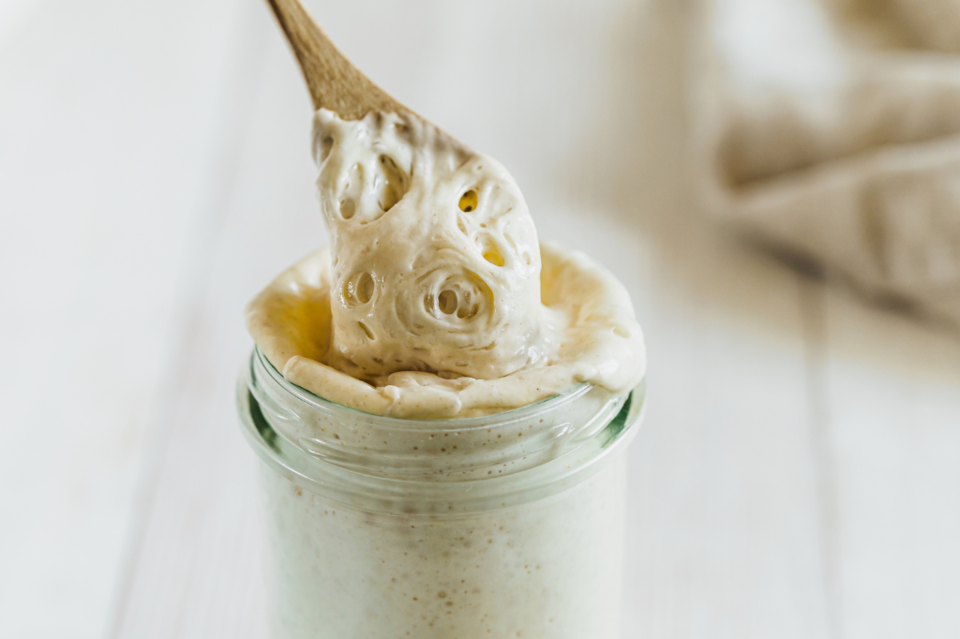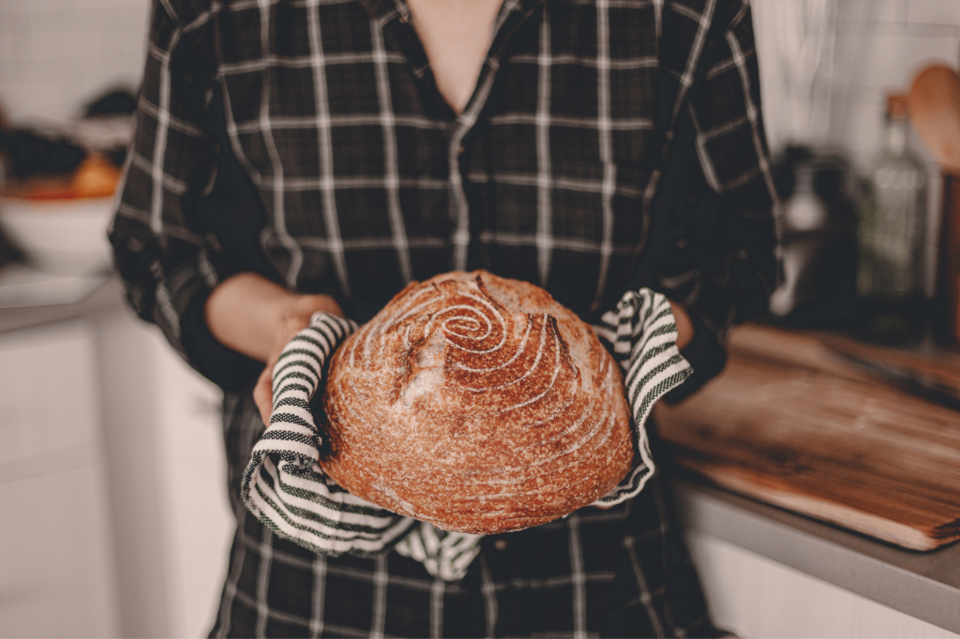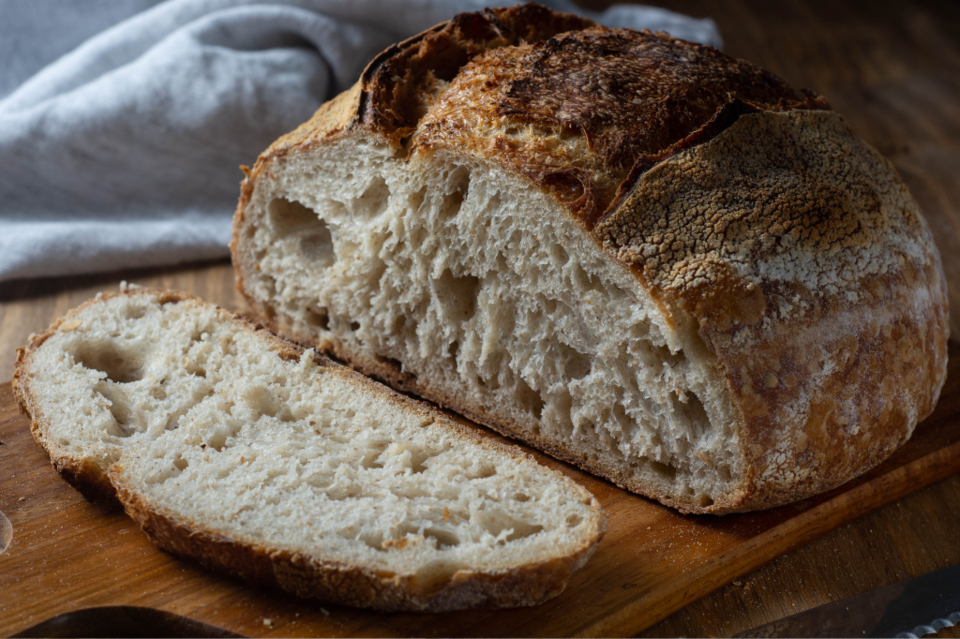It’s safe to say sourdough definitely had a major moment in 2020, but here’s the thing: it was never just a trendy quarantine past-time. This ancient bread-making method has some serious health benefits, a flavour profile that blows store-bought bread out of the water, and—perhaps best of all—it’s easier to make at home than you might think.
Whether you’re focusing on gut health, prefer real food that delivers nutrients (not just substance), or you just love the idea of pulling a freshly-baked loaf out of your oven on a Sunday morning, sourdough is the kind of slow food that pays off big time.
Why sourdough is better for your gut (and your taste buds)
Sourdough isn’t your average loaf of bread. It’s made using a live fermented culture, or “starter,” instead of commercial yeast. This produces lactic acid fermentation, which breaks down the gluten and phytic acid in the flour—making it easier on your digestive system and potentially gentler for those with gluten sensitivities (although it’s not considered gluten-free).
Research suggests that the longer fermentation time in sourdough can increase the bioavailability of nutrients like folate, antioxidants, and certain B vitamins. It may also lower the glycemic response compared to other white breads, which means it doesn’t spike your blood sugar in quite the same way, which is good news for weight control.
And who can deny that the flavour is unmatched. Tangy, complex, and chewy with a crisp crust.

Here’s how to make your own sourdough starter from scratch:
You really only need two ingredients: flour and water. But don’t let the simplicity fool you—it’s a little like adopting a pet (a bubbly, flour-fed pet that lives on your counter).
Day 1
Mix ½ cup of whole wheat or unbleached all-purpose flour with ¼ cup of lukewarm water in a clean glass jar. Stir well, cover loosely (a cloth or coffee filter with an elastic band works), and leave it at room temperature.
Days 2–6
Each day, discard about half of the mixture and add another ½ cup flour and ¼ cup water. Stir well. By day 5 or 6, your starter should be bubbly, slightly sour-smelling (in a good way, don’t worry), and ready to bake with.
If nothing’s happening by day 7, don’t panic—sometimes it takes a bit longer, especially in a cooler kitchen.
How to get a shortcut starter
If you don’t want to wait a week, you’ve got options. Many health food stores sell dehydrated or fresh sourdough starter. Or ask around—local bakeries often have more sourdough starter than they know what to do with and may be happy to share a scoop. If you’re in a community Spaces group or another neighbourhood page, odds are someone’s got a bubbly jar they’ll trade you for a coffee.
Caring for your starter
Once your starter is active, you can either:
• Keep it on your counter and feed it daily if you’re baking often, or
• Store it in the fridge and just feed it once a week.
Miss a feeding? Don’t worry. These little guys are surprisingly resilient. Scrape off any discoloured bits, feed it, and it’s likely to bounce back.

5 ways to enjoy sourdough beyond toast
1. Sourdough grilled cheese with kimchi or pickled onions. The tangy bread + melty cheese + punchy toppings combo is next-level.
2. Sourdough French toast. The chewy texture soaks up egg and cinnamon like a dream.
3. Sourdough bread crumbs or croutons. Toast slices low and slow, then blitz in a food processor or cube for salads.
4. Sourdough pizza crust. Stretch your starter into something fun—literally. It makes a bubbly, flavourful dough. Try this!
5. Sourdough discard crackers or pancakes. Don’t toss that extra starter. Mix it with a little flour, oil, salt and herbs for crackers—or turn it into savoury pancakes.
Whether you’re trying to improve your gut health,find a healthier bread alternative, or just want your kitchen to smell amazing, sourdough’s got something for everyone.
Sure, it may require a little effort—but that first slice of warm, crusty, homemade bread makes it all worth it. Plus, it makes a lovely offering to a neighbour, colleague or as a hostess gift.
About the Author

Alicia is a journalist and editor in digital and print media specializing in health, nutrition, fitness, and wellness. She was previously the Editorial Director of Clean Eating and Vegetarian Times. Her work has also appeared in Hone Health The Edge, Yoga Journal, Women’s Running, and Oxygen, among others. In addition to being a content creator, she's an ISSA-certified nutritionist, certified personal trainer, and fitness studio owner in Toronto. Alicia loves spreading the word about helpful, science-backed health information, and she can be contacted via her website at aliciamtyler.com.




